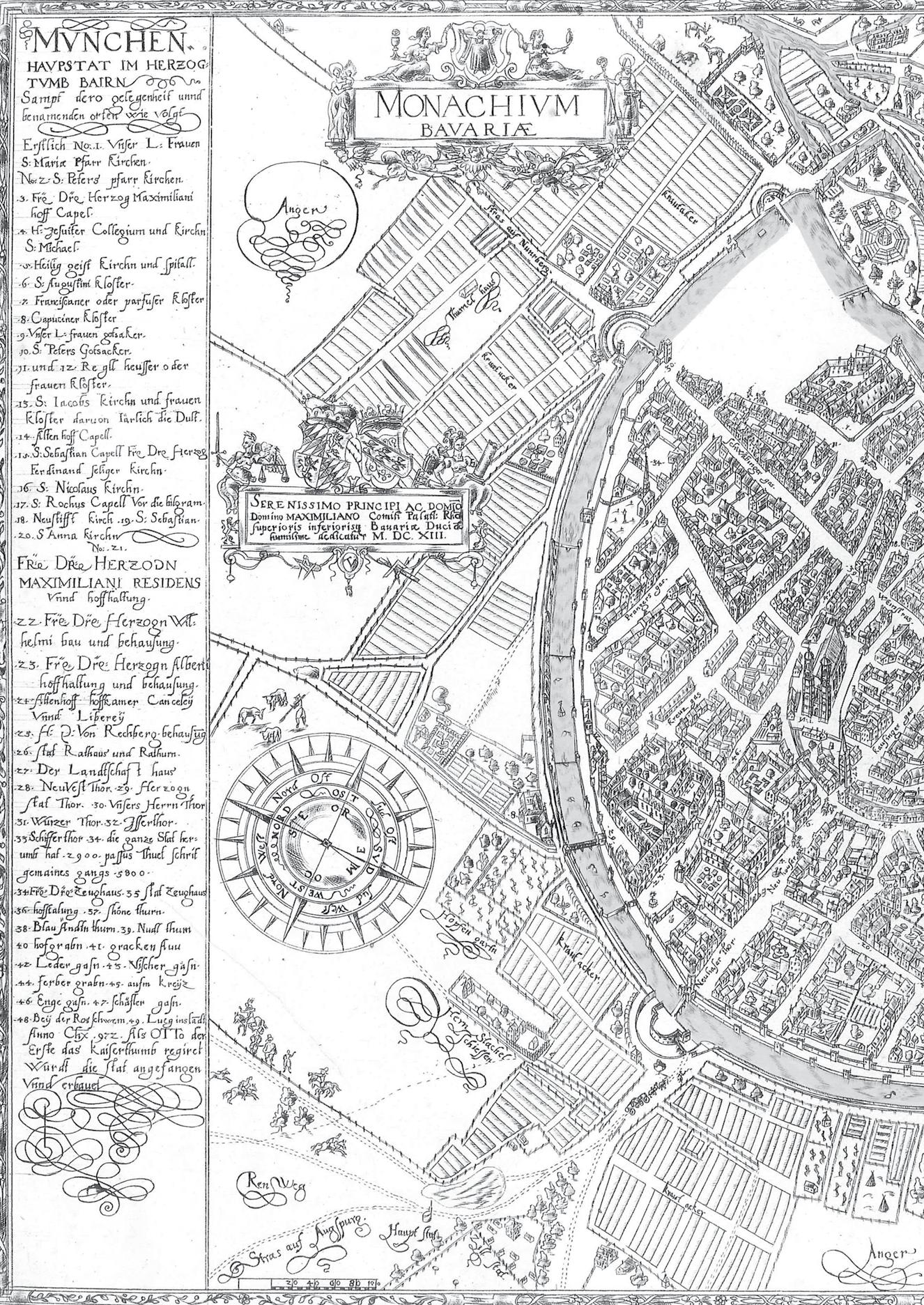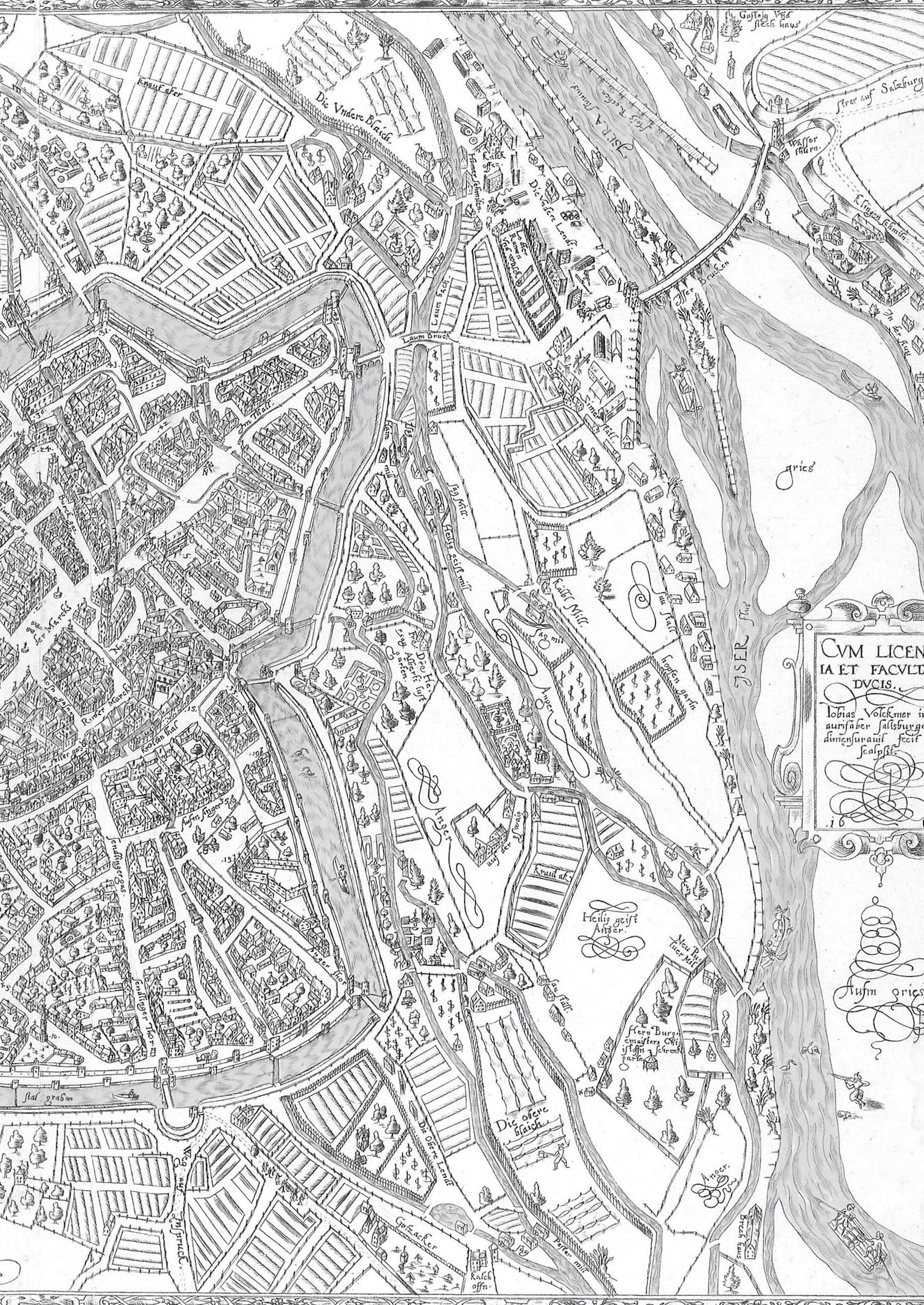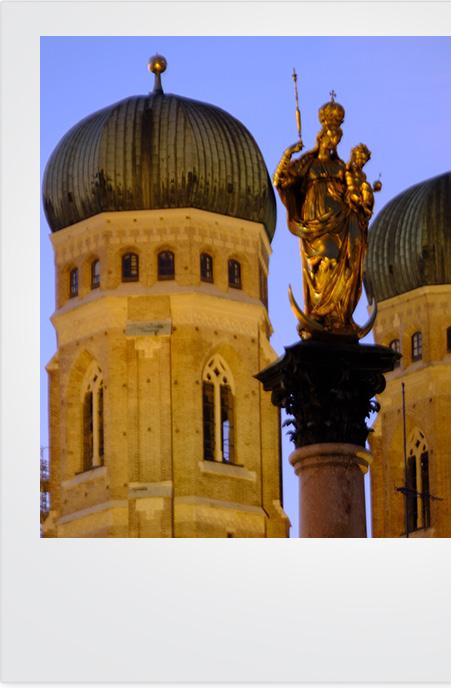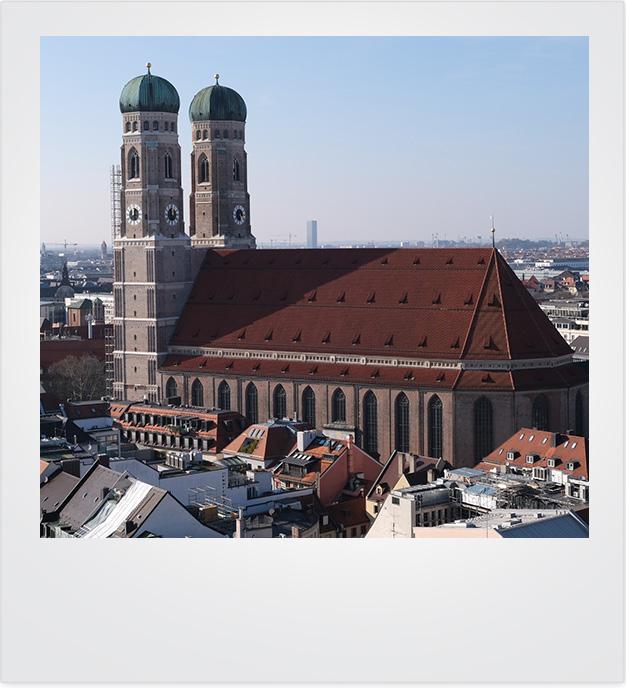
14 minute read
München: eine lebensvolle Stadt mit Dorfcharakter Matthias Scheidl
from PV Journal Munich
by Pietre Vive
MIInchen – by Matthias Scheidl
eine lebensvolle Stadt mit Dorfcharakter
Advertisement
München ist das größte Dorf Deutschlands, heißt es. Es ist sogar ein Millionendorf. Knapp 1,5 Millionen Menschen (Ende 2018) leben hier. Und doch hat es München verstanden - und versteht es noch heute - den Großstadtcharakter zu kaschieren und seine dörflichen Strukturen sichtbar zu halten. Tatsächlich fühlt man sich hier dank zahlreicher Grünanlagen und Biergärten und der Isar zumindest dem Augenschein nach fast auf dem Lande. Dazu gesellt sich das sonst dem ländlichen Raum vorbehaltene Gefühl, dass jeder jeden kenne—gemeint ist hier eine eigentümliche Fähigkeit, miteinander zu kommunizieren, zu leben und zu feiern. Kein Wunder also, dass gerade in München das weltgrößte Volksfest, das Oktoberfest, alljährlich veranstaltet wird. Selbst bei derartigem Mega-Event geht der Münchner Charakter nicht verloren, weil sich auch die vielen Nichtmünchner ohne größere Schwierigkeiten den Bräuchen, Trachten und Trinksitten der Einheimischen anpassen
können. Das macht wohl die beinahe magische Besonderheit Münchens aus: Die Stadt zieht Menschen in ihren Bann, wandelt sie nach ihrem Muster und macht sie so zu leidenschaftlichen Bürgern der hiesigen Lebensart. Sie prägt das Bild einer Stadt, in welcher der christliche Glaube und Tradition, politisches Machtbewusstsein und Repräsentationsbedürfnis, kulturelle Vielfalt und wirtschaftliche Prosperität— mal konkurrierend, mal harmonierend— die Stellgrößen einer geschichtlichen Entwicklung darstellen.
Münchens Weg in die Geschichte beginnt mit einem Streit um’s Geld. Im 12. Jahrhundert wurden neue Handelswege erschlossen, neue Märkte und Städte gegründet. Und es kam nicht selten vor, dass Machtansprüche

eine lebensvolle Stadt mit Dorfcharakter
gewaltsam durchgesetzt wurden. 1158 übernahm Herzog Heinrich der Löwe die Kontrolle des Salzhandels. Er ließ dafür kurzerhand eine Brücke in Oberföhring niederreißen, die in der Hand des Bischofs Otto von Freising war, und eine neue bei den „Munichen“ („Mönchen“) bauen—so wurde damals das Gebiet um eine Klostersiedlung (forum apud Munichen) genannt, das mit kleinen Dörfern besiedelt war. Mit dem „Augsburger Schied“ vom 14. Juni 1158 wurde die Rechtmäßigkeit der Tat Heinrich des Löwen bestätigt. München erhielt das Markt- und Münzrecht. Der Handel florierte und die Bevölkerung wuchs rasant an. Bald schon wurde die Stadt an der Isar das Machtzentrum Bayerns. Die Wittelsbacher, eines der ältesten deutschen Hochadelsgeschlechter, stiegen im 13. Jahrhundert zu Herzögen Bayerns auf. München wird 1255 Residenzstadt der Wittelsbacher und bleibt es bis ins 20. Jahrhundert. Die Finanzkraft Münchens ermöglicht den Ausbau der Stadt mit zahlreichen repräsentativen Gebäuden. Sie sind Ausdruck des Machtanspruchs der Wittelsbacher, beispielhaft im Bau der neuen Veste als Hofresidenz. Der Bau der Liebfrauenkirche (1468–1488) als Kollegiat- und Pfarrkirche (die älteste Pfarrkirche St. Peter wurde um etwa 1180 erbaut), der St.-Michaelskirche (1583–1597) samt Jesuitenkolleg als Bollwerk des katholischen Glaubens gegen die Reformatoren oder der Theatinerkirche St. Cajetan (1663–1675) zeugen noch heute in eindrucksvoller Weise vom christlichkatholischen Glauben der Wittelsbacher und der Bürger Münchens.
Not und Elend, Krankheit und Tod und die Belagerung Münchens durch die schwedischen Truppen König Gustav II. Adolf infolge des Dreißigjährigen Krieges vermochten nicht den Katholizismus zu schwächen, sondern der Glaube erfuhr geradezu eine Renaissance. Kurfürst Maximilian ließ aus Dankbarkeit für die wundersame Errettung Münchens zu Ehren der Muttergottes auf dem heutigen Marienplatz eine auf einer Marmorsäule vergoldete Marienstatue (1638) nach dem Vorbild der Maria von Loreto errichten und proklamierte Maria zur Schutzfrau Bayerns. Eine Welle der geistlichen Erneuerung durchzog Stadt und Land, eine Offensive von Glaubensverkündigung, katholischer Bildung und Erziehung und für damalige Vorstellungen zeitgemäßen Formen von Volksfrömmigkeit, wie zum Beispiel die Wallfahrt ins nahgelegene Maria Ramersdorf oder Maria Thalkirchen. Hieraus entstanden viele der Bräuche und Traditionen, von denen noch heute einige gepflegt werden.
München gestern und heute. Scheinbar immer weniger Menschen können im 21. Jahrhundert mit den geistlichen und kulturellen Errungenschaften vergangener Tage etwas anfangen. Wie damit in einer Zeit umgehen, die keine Pause kennt, die ständig im Wandel begriffen ist? Digitalisierung, Klimawandel, Werteverschiebung, - das sind nur einige der Begriffe, die für den Wandel unserer Zeit stehen. München ist wandlungsfähig. Mit jedem neu zugezogenen Bürger verändert sich das Bild der Stadt, und die Stadt verbildlicht sich in jedem Neubürger. Diese besondere Qualität Münchens wurde bereits 1782 vom Geschichtsschreiber Lorenz Westenrieder in anderer Weise formuliert: „Es ist hier gut sein, und wer nur eine kleine Zeit zugegen, will hier seine Wohnung bauen.“ Die Münchner, übrigens, bauten zahlreiche Gotteshäuser, damit Gott bei den Menschen wohnen kann. Es ist zum Markenzeichen der Stadt geworden: die Frauenkirche mit ihren beiden Türmen.
Munich: a lively city with the character of a village

It is said that Munich is the largest “village” in Germany, a village of millions. Nearly 1.5 million people (end of 2018) live here. And yet Munich has managed—as it may indeed be understood—to conceal the city character and to keep its village structures visible. In fact, thanks to numerous green spaces and beer gardens and the Isar River, one might easily feel as if he or she are in the countryside. This is accompanied by that notion that everyone knows everyone—a quality with is otherwise reserved for rural areas. This implies a peculiar ability to communicate, live and celebrate with one another. No wonder, then, that the world’s largest folk festival, the Oktoberfest, is held every year in Munich. Even with such a mega-event, that character so typical of Munich is not lost, because anyone coming from beyond the territory of the villagecity may easily adapt to the customs, costumes and drinking habits of the locals. This is perhaps the almost magical peculiarity of Munich: the city captivates people, transforms them according to their pattern and, thus, makes them passionate citizens of the local way of life. It shapes the image of a city in which the Christian faith and tradition,
political awareness of power, and the need for representation, cultural diversity and economic prosperity—sometimes conflicting, sometimes harmonious—represent the parameters of a historical development.
Munich’s path into history begins with a dispute over money. In the twelfth century, new trade routes were opened, new markets and cities were founded. And it was not uncommon for claims to power to be enforced by military force. In 1158, Duke Henry the Lion took control of the salt trade. For this, there was a bridge in Oberföhring, which was in the hands of Bishop Otto von Freising, and had a new one built by the “Munichen” (“monks”)—this was the name of the area around a monastery settlement (forum apud Munichen) that was populated with small villages. With the “Augsburger Schied” of 14 June 1158, the legality of the act of Henry the Lion was confirmed. Munich was granted market and coin rights; trade flourished and the population grew rapidly. Soon the city on the Isar River became the power centre of Bavaria. The Wittelsbacher, one of the oldest German noble families, rose to Bavarian dukedom in the thirteenth century. Munich became the residence city of the Wittelsbacher in 1255 and remained so until the twentieth century. Munich’s financial strength enabled the expansion of the city with the buiding of numerous representative buildings. They are an expression of the Wittelsbachers’ claim to power, exemplified in the construction of the new Veste as a court residence. The construction of the Church of Our Lady (1468–1488) as a collegiate and parish church (the oldest parish church of St Peter was built around 1180), the St Michael’s Church (1583–1597) and the Jesuit College as a bulwark of the Catholic faith against the reformers or the Theatinerkirche St Cajetan (1663–1675), still testify impressively to the Christian-Catholic faith of the Wittelsbach people and the citizens of Munich.
Hardship and misery, illness and death, and the siege of Munich by the Swedish troops of King Adolf Gustav II as a result of the Thirty Years War, could not weaken Catholicism, but faith experienced a renaissance. Out of gratitude for the miraculous salvation of Munich in honour of Our Lady, Elector Maximilian erected a statue of Mary (1638), gilded on a marble pillar on today’s Marienplatz. This statue was modelled on the Virgin of Loreto, and this moment also proclaimed the Virgin Mary as the protector of Bavaria. A wave of spiritual renewal permeated the city and the country—a force towards

the proclamation of faith through Catholic education and contemporary forms of popular piety, such as the pilgrimage to nearby Maria Ramersdorf or Maria Thalkirchen. This has led to many of the customs and traditions, some of which are still maintained today.
Munich yesterday and today. Apparently, fewer and fewer people in the twenty-first century can apply and make proper use of the spiritual and cultural achievements of the days gone by. How are we to deal with this in a time that does not know how to pause, how to be still; in a world that is constantly changing? Digitisation, climate change, the shift in values – these are just some of the terms that stand for the change of our time. Munich is capable of change. With each new citizen, the image of the city changes, and the city is illustrated in every new citizen. This special quality of Munich was already formulated in 1782 by the historian Lorenz Westenrieder, albeit in another way: “It is good to be here, and those who only want to spend a little time here want to build their own apartment here.” The people of Munich, by the way, also built numerous places of worship so that God could live with the people. It has become the hallmark of the city: the Frauenkirche with its two towers.
Matthias Scheidl Deacon at the Frauenkirche, Munich


s u s C h r i s t u s
S p r e h e n w


In Deutschland wird in diesen Wochen und Monaten sehr viel über Reform der katholischen
Kirche diskutiert. Das ist gut und notwendig. Meiner Ansicht nach aber ist etwas Anderes noch notwendiger: Alle Christen, denen die Sache Jesu Christi am Herzen liegt, sollten vor allem in geeigneter Weise von Gott sprechen. Ich bin der Ansicht, dass für unzählige moderne Europäer Gott nahezu keine Rolle mehr spielt. Sie sind keine schlechten Menschen, engagieren sich sogar vielfach für die
Nächsten, leben korrekt. Vor allem die Flüchtlingsaufnahme vor fünf Jahren hat das christliche Denken vieler Bürger gezeigt.
Aber Gott kommt im Denken der meisten
Bürger nur noch verschwindend selten vor. Wenn aber nicht in guter Weise von Gott gesprochen, dann verschwindet er aus der Gesellschaft. Das wird bestätigt durch die Studie „Schweigespirale“. Diese hat wissenschaftlich gezeigt: Wovon in den Medien und sonst viel gesprochen wird, davon wird dann immer mehr geredet. Wovon wenig gesprochen wird, davon ist immer weniger die Rede. Wenn eines Tages in Europa niemand mehr z.B. von China sprechen würde, dann würde die europäische Gesellschaft eines Tages meinen: Es gibt kein China. Wenn in Europa einmal ununterbrochen nur von Brasilien gesprochen würde, dann würde man den Eindruck haben, Brasilien läge vor der Haustüre. Also: Wir sollten in geeigneter Weise von Gott sprechen. Das ist nicht so einfach. Gott ist ja nicht irgendeine „Sache“. Von ihm kann man nur bescheiden und unaufdringlich sprechen, indem man andeutet, Gott im eigenen Leben ernst zu nehmen. Vor allem sollten wir aber auch entsprechend leben. Worte müssen durch die Lebensform glaubwürdig werden.
Und noch ein Zweites: Wir sollten versuchen, Jesus Christus so gut wie möglich zu kennen, damit wir von ihm sprechen können. Viele Europäer haben wohl oft nur ein Klischee von Jesus Christus. Sie kennen ihn vielleicht nur als Guten Hirten oder als Richter oder eben als Gekreuzigten. Dass er auch stürmisch, provozierend, herausfordern, umstürzend, kulturprägend ist, davon haben sehr viel Menschen, auch viele Getaufte kaum eine Ahnung.
Jesu Christus, der Mann aus Nazareth hat mehr als alle anderen Persönlichkeit der Geschichte vor allem Europas geprägt. Die Bergpredigt ist ein Kulturgut, ebenso wie der Dekalog eine Kulturgut ist. Religion ist nicht einfach Privatsache. Religionen prägen Kulturen. Freilich haben die Christen in ihren Kirchen auch unzählig viel Böses getan mit
S p r e h e n w i r v o n G o t t K e n n e n w i r J e s u s C h r i s t u s S p r e h e n w i r v o n G o t t K e n n e n w i r J e s u s C h r i s t u s P . E b e r h a r d v . G e m m i n g e n S J
der Unterdrückung der Frauen, Hexenprozessen, Kreuzzügen und zuletzt Missbrauch von Minderjährigen. Das überdeckt die kulturprägende Wirkung Jesu Christi. Seine Bedeutung ist aber auch erkennbar in der Musik etwas von Bach, in der europäischen Malerei und Baukunst, in den Domen und Kapellen, in der Literatur.
Weil die Bibel lehrt, dass der Mensch nach dem Bild Gottes geschaffen ist, fand zunächst das Volk der Juden, dass die Würde des Menschen unantastbar ist. Und weil dies so ist, haben die Europäer langsam die unantastbaren Menschenrechte erkannt. Unzähliges, was in unseren Verfassungen steht, geht auf den Juden Moses und auf den Juden Jesus zurück. Der Jude Paulus brachte es nach Europa.
Nur wenn wir unsere Geschichte, vor allem die der Kultur kennen, kann Europa seine gesellschaftliche Bedeutung bewahren. Sprechen wir von Gott und Jesus Christus!
Do we know Jesus Christ? Are we talking about God?

Over the past recent months, there has been a lot of discussion in Germany about reform within the Catholic Church. That is good and necessary. In my opinion, however, something else is even more necessary: all Christians who care about the belief in Jesus Christ should, above all, speak of God in an appropriate manner.
For countless modern Europeans, it seems, God is almost irrelevant. Of course, this is not to say that this makes one a bad person! Indeed, these very people are often committed to their families, neighbours, and even foreigners; they live correctly. The reception of refugees five years ago, for instance, has shown the Christian thinking of many citizens. But God is only increasingly rare in the mindset of most citizens. If one does not speak of God in a meaningful and wholesome way, God disappears from society. This is confirmed by the “Spiral of Silence” model, a theory proposed by the German political scientist Elisabeth Noelle-Neumann. This has scientifically shown that “people who have believed that they hold a minority viewpoint on a public issue will remain in the background where their communication will be restrained; those who believe that they hold a majority viewpoint will be more encouraged to speak.” 1 For instance, if one day no one in Europe were to talk about China, then European society would one day think that there is no China; if in Europe only Brazil were to be talked about continuously, one would have the impression that Brazil was on its doorstep. With this same reasoning in mind, we should therefore speak of God in an appropriate way. Naturally, it is not that simple. God is not some “thing”. One can only speak of God modestly and unobtrusively by suggesting that one should take God seriously in one’s own life. Above all, however, the way we live ought to be a reflection of the way we speak; words become credible through our way of life.
Furthermore, it is necessary to seek to know Jesus Christ as well as possible, so that we may indeed speak of Him. We often build some form of image or cliché about Jesus Christ. One may think of him as the Good Shepherd, the Universal Judge, or as the Crucified One. However, he is also troublesome, provocative, challenging, overturning, culturally radical—characteristics of which a lot of people, even many baptised, have little idea or, at least, speak little of.
Jesus Christ, the man from Nazareth, has shaped the history of Europe more than any other personality. The Sermon on the Mount is a cultural asset, just as the Decalogue is a cultural asset. Religion is not simply a private matter; religions shape and transform cultures. Of course, Christians within the Church have also caused much harm, for example, when we think of the oppression of women, witch trials, crusades and, most recently, abuse of minors or vulnerable people. This masks the cultural impact of Jesus Christ. And yet, its significance is also recognisable in the creation of beauty, in the music of Bach or Vivaldi, in European art and architecture, in the cathedrals and chapels, in literature.
Because the Bible teaches that man is created in the image of God, the Jews first established that the dignity of man is inviolable. Europeans, too, have slowly acknowledged human rights as inviolable. Countless articles in our constitutions go back to the Jews of the time of Moses and the Jews of the time of Jesus. Paul—the Jew and the early Christian— brought it this view into Europe.
Only if we know our history, especially that of culture, can Europe retain its social significance. Let us therefore speak of God and Jesus Christ!










